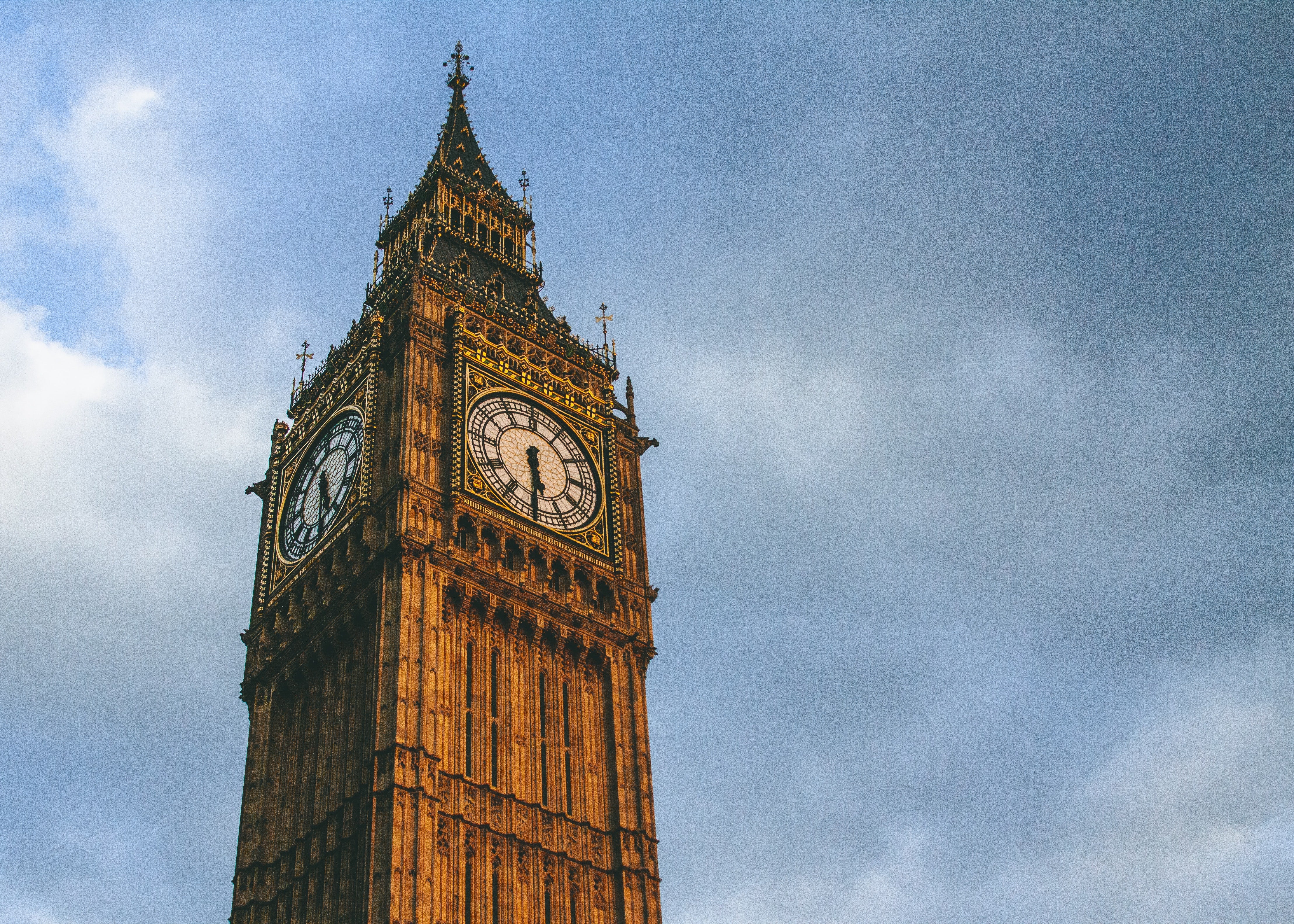
The Story Behind the Most Famous Clock in the World
Since its inception on May 31, 1859, Big Ben has become an iconic representation of British culture. Its namesake is derived from the thirteen-ton bell housed within the tower's 315-foot structure, which contains 334 steps leading to the belfry. Designed in a neo-Gothic fashion by architect Augustus Pugin, the four clock faces are composed of 312 glass pieces each and the minute hands span fourteen feet, while the numbers are of a length of approximately 23 inches. During parliamentary sessions and evenings, the clock face is illuminated by lights, signifying the city's official timepiece.
Big Ben is the nickname for the iconic tower which is located in the north end of London’s House of Parliament at the Palace of Westminster. Although the official name of this magnificent structure was originally the Clock Tower, it was changed to the Elizabethan Tower in 2012 to celebrate Queen Elizabeth II's Diamond Jubilee.

The 1834 fire viewed from the south bank of the Thames, T. Baynes.
On October 16, 1834, a devastating fire destroyed the original Palace of Westminster, which was thought to be the catalyst for the creation of Big Ben. Ten years later, architect Charles Barry proposed the construction of the new Houses of Parliament, which included a clock tower, and commissioned Augustus Pugin to design it in the Gothic Revival style. Pugin, already renowned for his work on English structures such as Scarisbrick Hall in Lancashire, unfortunately saw the completion of Big Ben as the concluding chapter of his career; he tragically passed away in 1852, aged 40, after suffering from insanity.
This globally renowned monument is powered by the sophisticated double three-legged gravity escapement developed by Edmund Beckett Denison in 1851, which offers unparalleled accuracy. This device safeguards the grand hands of the clock from any external force, such as birds or gusts of wind, that could impede the pendulum's motion.

In 1857, a fracture occurred in the first bell, weighing approximately sixteen tonnes, that resided within the tower. A lighter bell was put in its place in July 1859, yet unfortunately, it succumbed to the same fate, shattering shortly after its installation. Sir George Airy, a mathematician and astronomer, proposed that the gargantuan bell be repositioned so that the newly-appointed, less heavy hammer could contact the bell in a different area, eventually proving to be the decisive resolution to the issue. Big Ben chimes each hour, with smaller bells ringing to mark every quarter hour.
Big Ben is an iconic symbol of the United Kingdom, one of the world's most recognised landmarks. It is seen as a symbol of British national pride and has become a symbol of resilience and hope during times of war and adversity. The clock is also seen as a symbol of the country's history and culture, and its chimes are heard all around the world.

